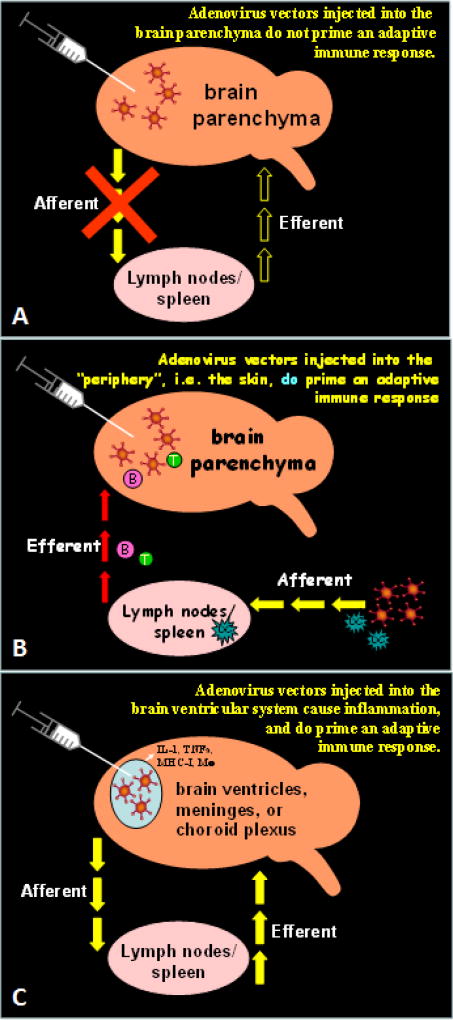FIGURE 1.
This figure illustrates in schematic fashion the neuroimmune structure underlying the phenomenology known as the brain’s immune privilege. In this figure the antigen model used to explore the brain’s immune responses are non-replicating adenoviral vectors. (A) illustrates the condition in which adenoviral vectors are injected carefully only into the brain parenchyma proper. Under these conditions given the absence of afferent dendritic cells from the brain parenchyma, viral vectors have been shown to remain in the brain for 12 months and more. A systemic anti-adenoviral immune response will not be induced. (B) If however, the systemic immune system is primed, an immune response will be generated, brain inflammation will ensue, and the viral vectors will be eliminated. (C) Direct administration of vectors into the brain ventricles will induce a systemic anti-adenoviral immune response, as the ventricular immune system has all necessary cells and vessels to do so. Therefore, in our novel therapeutic strategy, we recruit dendritic cells to the brain to implement those essential aspects of immune function which are missing from the brain.

